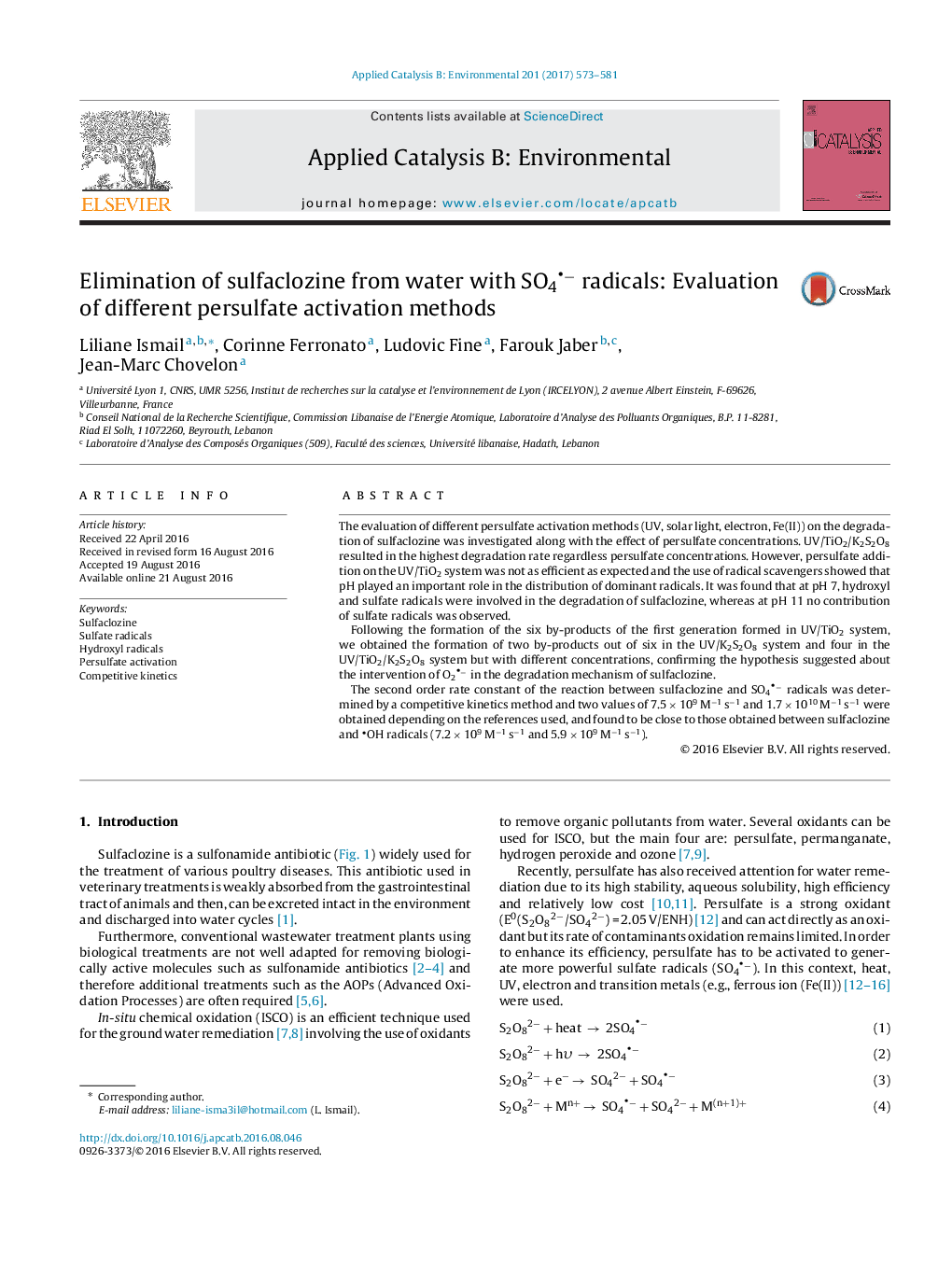| کد مقاله | کد نشریه | سال انتشار | مقاله انگلیسی | نسخه تمام متن |
|---|---|---|---|---|
| 6455071 | 1418819 | 2017 | 9 صفحه PDF | دانلود رایگان |

- Degradation of SCL by persulfate ions activated by sunlight, UV, UV/TiO2, Fe(II).
- Comparison of the efficiency and by-products for the different systems.
- The reaction rate constants of SCL with OH and SO4â were found to be close.
- UV/TiO2/K2S2O8 was found to be the most efficient system.
The evaluation of different persulfate activation methods (UV, solar light, electron, Fe(II)) on the degradation of sulfaclozine was investigated along with the effect of persulfate concentrations. UV/TiO2/K2S2O8 resulted in the highest degradation rate regardless persulfate concentrations. However, persulfate addition on the UV/TiO2 system was not as efficient as expected and the use of radical scavengers showed that pH played an important role in the distribution of dominant radicals. It was found that at pH 7, hydroxyl and sulfate radicals were involved in the degradation of sulfaclozine, whereas at pH 11 no contribution of sulfate radicals was observed.Following the formation of the six by-products of the first generation formed in UV/TiO2 system, we obtained the formation of two by-products out of six in the UV/K2S2O8 system and four in the UV/TiO2/K2S2O8 system but with different concentrations, confirming the hypothesis suggested about the intervention of O2â in the degradation mechanism of sulfaclozine.The second order rate constant of the reaction between sulfaclozine and SO4â radicals was determined by a competitive kinetics method and two values of 7.5Â ÃÂ 109Â Mâ1Â sâ1 and 1.7Â ÃÂ 1010Â Mâ1Â sâ1 were obtained depending on the references used, and found to be close to those obtained between sulfaclozine and OH radicals (7.2Â ÃÂ 109Â Mâ1Â sâ1 and 5.9Â ÃÂ 109Â Mâ1Â sâ1).
104
Journal: Applied Catalysis B: Environmental - Volume 201, February 2017, Pages 573-581